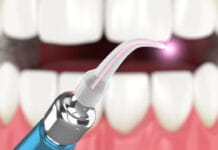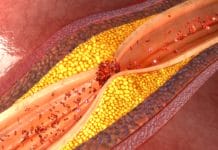Human trafficking is a modern form of slavery, second only to drugs as the world’s largest criminal activity. The United Nations defines trafficking in human beings as the recruitment, transportation, transfer, harboring, or receipt of persons by means of the threat or use of force or other forms of coercion, abduction, fraud, detection, abuse of power or position of vulnerability, or the giving or receiving of payments or benefits to achieve the consent of a person having control over another person for the purpose of exploitation.2 Healthcare providers, like dental hygienists, are some of the few professionals who may be allowed contact with victims while they are being trafficked. Due to this fact, dental hygienists should be aware of how to identify behavioral indicators of potential trafficking and be prepared to offer resources for assistance to victims.
It is estimated by the U.S. Department of State that 26 million individuals worldwide are trafficked annually; this includes 1.2 million children. In the United States, 11% are victims of labor trafficking lured by promises of employment, and 82% were subjected to sex trafficking.4 Those perpetuating human trafficking could be anyone including family members, intimate partners, gang and network members, business owners, and government officials. They are men and women from diverse racial, ethnic, and socio-economic backgrounds.
Those at risk of human trafficking are often involved in the child welfare system, homeless youths, runaways, have mental health concerns, or substance abuse issues.1 Lack of access to social integration, opportunities for employment, and poor access to education make victims more exploitable.3 Traffickers work to identify their victim’s vulnerabilities and use them to create dependency in many cases.
The Polaris Project, an anti-trafficking organization, lists access to health services as one of the top five points of access to help for victims. A U.S. based survey found that 26.5% of survivors had been seen by a dentist or other healthcare professional while being trafficked, but very few were identified. Human trafficking victims may present for dental care as a result of being restricted access to oral health products or negative effects on oral health due to forced labor or sex work. In addition, traffickers may bring victims for cosmetic purposes to make them more attractive to clients.4
Patients who are being trafficked may show signs of victimization such as injuries from violence, head and neck trauma, sexually transmitted infections, dental orofacial conditions, and malnutrition. Tattoos or brandings are common, marking the trafficked person as property. The lists below, adapted from the Polaris Project, are important follow-up questions and red flags for dental hygienists who may be concerned a patient is being trafficked.1,4
Human Trafficking Assessment Questions
Clinicians should identify their interest in helping and avoid sounding judgmental when asking the following screening questions:
- Do you feel you live and work in a safe place?
- Are you free to come and go at your own will?
- Are you pressured to do things you are uncomfortable doing?
- Do feel threatened or intimidated by someone? How?
- Do you have access to the money you earn?
- Has anyone held some/all your money with promises to keep it safe?
- Are you in debt to someone?
- If yes, how are you paying off that debt?
- Does someone monitor and control your work?
- Are you able to take days off from work?
- What do you do on your days off?
- If you are sick, are you forced to work?
- Has your ability to communicate with others been restricted or not allowed at all?
- Do you have a phone or computer or are those not allowed?
- Does someone control your access to food, healthcare, or medications?
- Has someone taken your I.D., passport or any personal documents?
Human Trafficking Red Flags
Work Conditions
- Is not free to leave or come and go at will
- Is under 18 and is providing commercial sex acts
- Is in the commercial sex industry and has a pimp/manager
- Is unpaid, paid very little, or paid only through tips
- Works excessively long and/or unusual hours
- Is not allowed breaks or suffers under unusual work restrictions
- Owes a large debt and is unable to pay it off
- Was recruited through false promises concerning the nature and conditions of his/her work
- High security measures exist in the work and/or living place (i.e., opaque windows,
boarded up windows, bars on windows, barbed wire, security cameras, etc.) - Is living and working on site
- Experiences verbal or physical abuse by their supervisor
- Is not given safety equipment
- Is not paid directly
- Is forced to meet daily quotas
Physical Signs
- Health and dental care needs unmet
- Signs of poor hygiene
- Signs of malnourishment and/or dehydration, fatigue
- Branding/tattooing indicating ownership
- Signs of physical and/or sexual abuse, physical restraint, confinement, or torture
- Self-inflicted injuries
- Chronic medical conditions
Psychological Signs
- Fearful, anxious, depressed, submissive, tense, or nervous/paranoid
- Unusually fearful or anxious behavior with mention of law enforcement or immigration officials
- Signs of substance abuse or addiction
- Withdrawn behavior or behavior
- Lack of eye contact
- Submissive and/or extreme attachment to 3rd party
- Extreme startle response
Lack of Control
- Has few or no personal possessions
- Is frequently monitored
- Is not in control of their own money, financial records, or bank account
- Is not in control of their own identification documents (ID or passport)
- Is not allowed or able to speak for themselves (3rd party may insist on being present)
Other
- Claims of just visiting and inability to clarify where they are staying/address
- Lack of knowledge of whereabouts and/or do not know what city he/she is in
- Appears to have lost sense in time
- Shares scripted, confusing, or inconsistent stories
- Protects the person who may be hurting them or minimizes abuse
- Reported age seems inaccurate
- Accompanied by controlling/demeaning 3rd party
- 3rd party pays for treatment with cash
Dental hygienists can not only help to identify and protect human trafficking victims, but also have the skills to offer forensic services involving the collection of evidence of signs of abuse, patient medical history and background, or estimating the age of adults and minors with no birth certificate.3 When encountering a possible victim of human trafficking, it is imperative that any injuries found during a dental examination are documented thoroughly including description, location, duration, and information pertaining to cause.4
One of the biggest challenges in stopping the trafficking of human beings is how widely underreported it is. If a patient is identified or identifies themselves as a human trafficking victim, it is important to assess immediate needs and safety, provide support, and encourage self-reporting. An adult victim’s ability and choice to report should be respected, and unless mandated, authorities should not be contacted without consent. It may not be uncommon for a person to decline to report for several reasons. Survivors have reported fearing retaliation, feeling ashamed at how their loved ones and communities would react, or in some cases were conditioned to mistrust anyone but their captor or did not realize they were being trafficked.4
Dental hygienists must know their state-mandated reporting laws for children and adults. Oral health providers are mandated to report any suspicion of abuse or neglect involving children under the age of 18. It is not recommended that dental hygienists provide their own personal contact information, housing, or monetary help to an identified victim of human trafficking. Instead, it is important to be educated on housing and intake requirements, legal assistance, and trauma-informed care providers in your community.4 The National Human Trafficking Hotline is funded in part by the U.S. Department of Health and Human Services and is operated by Polaris, a non-profit, non-governmental, anti-trafficking organization.1 In 2017 alone, the hotline took on 8,759 cases involving 10,615 victims of human trafficking. Table 3 shows a list of helpful resources for reporting human trafficking adapted from the Polaris Project.1,4
Resources for Help or Reporting Human Trafficking
National Human Trafficking Hotline – 888-373-7888
Local Police Department – Local contact number or 911
Department of Homeland Security Blue Campaign to End Human Trafficking – https://www.dhs.gov/blue-campaign
Polaris Project Website – https://polarisproject.org/
U.S. Immigration and Customs Enforcement (ICE) & Homeland Security Investigations (HSI) – 866-347-2423 – https://www.ice.gov/features/human-trafficking
Conclusion
Dental hygienists should consider the aftermath and the special circumstances in treating survivors of human trafficking as well. Victims of human trafficking have often been subjected to psychological trauma, injuries from violence, head and neck trauma, sexually transmitted infections, poor nutrition, and chronic dental issues.2 Survivors often struggle with PTSD, anxiety, and depression. These patients may also have a hard time being in certain positions, items in the mouth, or perceived feelings of being out of control. Dental hygienists should strive to provide the patient with a sense of control and calm throughout their appointment.3
Before you leave, check out the Today’s RDH self-study CE courses. All courses are peer-reviewed and non-sponsored to focus solely on high-quality education. Click here now.
Listen to the Today’s RDH Dental Hygiene Podcast Below:
References
- Human Trafficking. (2018, December 13). Polaris Project. https://polarisproject.org/human-trafficking
- Nuzzolese, E. Identification of Human Trafficking Victims in Dental Care Settings. The Journal of Forensic Odonto-stomatology. 2013; 31 (Suppl 1): 1-30.
- Nuzzolese E. Human Trafficking: Role of Oral Health Care Providers. The Journal of Forensic Odonto-stomatology. 2014; 32 (Suppl 1): 1-8.
- Syme, S.L., Camardese, S., Mehlmen-Orozco, K. (2017, August 04). Human Trafficking: Red Flags for Dental Professionals. Decisions in Dentistry. http://decisionsindentistry.com/article/human-trafficking-red-flags-dental-professionals/











